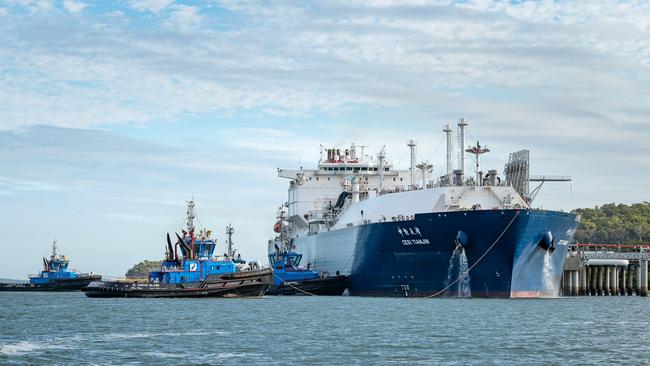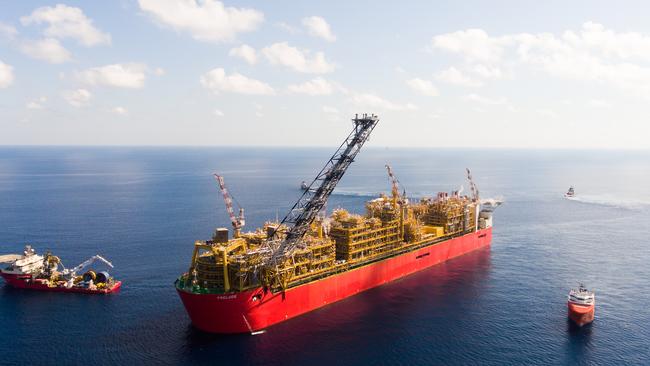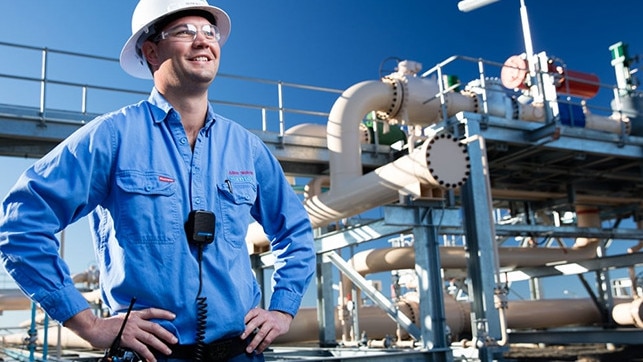
Australian manufacturers want cheap gas, arguing they shouldn’t have to struggle to get cheap and easy supply given Australia is the world’s biggest supplier of the commodity.
Producers, having invested tens of billions into exploration and infrastructure, want the best price possible for their gas.
From there, the debate rapidly bogs down in the weeds.
Does cheap gas for manufacturing lead to more and better paid jobs than an LNG export industry? Should the price of gas offered into the domestic prices be linked to an international gas benchmark? And if so, which one?
Should gas producers be allowed to factor in the costs of building and running liquefaction plants into the prices for domestic consumers who buy gas straight out of a pipeline and don’t need the intensive processing that LNG requires before export?
Did gas producers over-invest in infrastructure during the boom and, if so, should domestic consumers be forced to pay the cost of those decisions?
Will more supply eventuate if you make it easier to build new gas projects and infrastructure, or will lower prices deter investment? Or should the government stand aside and let the market do its thing?
All of these are contestable issues, and have been vigorously contested for years.
In any ordinary year, the government would simply pick a winner and let the market sort it out.
But last year Morrison promised that a “gas-led recovery” would help Australian recover from the economic woes caused by the pandemic.
His hand-picked COVID-19 commission’s manufacturing taskforce – led by former Dow boss Andrew Liveris – targeted a domestic price of $4 to $6 a gigajoule for gas, arguing it would create thousands of new manufacturing jobs.
Encouraging new sources of supply may even out the domestic market in the longer term. But, having promised a gas-fired and manufacturing led recovery from the pandemic, in the short term you can either change policy settings to deliver cheap gas, or not.
If you want cheap gas quickly, you’d need to risk the anger of gas producers by forcing them to sell at a discount to offshore prices.
If you don’t want to do that, your gas-fired recovery is going nowhere.

Among other things, manufacturers wanted the new agreement to include a reference to international benchmark pricing as a means of setting local contract prices.
Essentially they wanted the agreement to say local consumers should pay roughly the same rate for gas as the Japanese and Chinese utilities that buy Australian LNG on long-term contracts, or on the spot market, less the cost of turning natural gas into LNG and shipping it offshore.
That would have given them leverage when it came to thrashing out the next leg of the current round of domestic gas agreements, the code of conduct that sets out ground rules for contract negotiations between individual producers and big consumers.
The agreement contains no such reference, sparking fury behind the scenes at major gas consumers – including industrial giants such as Incitec Pivot, Orica and Qenos.
(There is, as an aside, a certain amount of wry chuckling going on in others parts of corporate Australia over the current kerfuffle, given Orica’s Alberto Calderon made very different arguments as BHP’s commercial officer when the mining giant helped force a shift to contract rather than annual pricing for iron ore and coal during the boom, putting local steelmaker BlueScope under pressure as prices surged).
While their public response has been muted, as other discussions with the government are still underway, manufacturers say the agreement hands the gas industry what it wanted.
The heads of agreement says spot sales into the Australian market can “have regard” to prices producers could realise on international markets, and long-term prices for domestic users can also factor in forward contract values on international markets, as well as costs of production.
Status quo
That, manufacturers say, pretty much gives the gas industry a licence to maintain the status quo and removes any leverage they may have in the code of conduct talks.
The final hope for manufacturers is that the federal government’s domestic gas policy, still under development by Energy Minister Angus Taylor and Resources Minister Keith Pitt, will include mechanisms to force more gas into the domestic market, bringing down prices.

That worked in WA, where the domestic gas reservation put in place by the state government before the boom now ensures the state pays less for gas than the rest of the country.
Importantly, it’s not just the WA reservation that does this. If producers can’t find a buyer for gas reserved for domestic use, they’re still free to sell it offshore.
But they have to make a genuine effort to find a buyer, and then prove they’ve done so, before permission is given for exports. That competition to sell the gas is a major factor driving down prices.
That is an element so far missing from the federal government’s response. Producers have to offer up gas that isn’t subject to long-term supply agreements, but the agreement implies they will remain pretty much free to sell it for the best price going, rather than the best local price on offer.
A stronger domestic gas reservation policy on the east coast may yet address that issue, but is likely to be far more hotly contested by producers than almost anything else the government could do.
While the fundamentals remain the same – more gas into domestic prices would push down prices, costing producers revenue – China’s ownership of Queensland gas is a complicating factor.
In 2020 exports to China rose 2.8 per cent, or 800,000 tonnes, to 29.6 million tonnes, according to figures released by EnergyQuest, putting it second only to Japan as Australia’s biggest customer.
Rising demand
China’s rising demand for Australian LNG has come as it has banned imports of Australian coal – perhaps partly because of its substantial ownership stake in Queensland gas.
China National Offshore Oil Corporation owns 50 per cent of train 1 of QCLNG, and 50 per cent of QGC’s train 1, with China Sinopec holding 25 per cent of APLNG.
China Inc invested billions of dollars into Australian gas during the boom years to help secure long-term supply — as a hedge against reliance on Russian gas if historic tensions rise again, to learn a few things about gas production as it looked to establish its own industry, and to make a few bucks along the way.
Cost blowouts during the boom era have made commercial returns a very long-term proposition, and China has struggled to build scale in its own industry. Russia … is still Russia, even if China is extending its pipeline connections to the European gas major.
With limited alternatives to buying Australian-produced LNG, industry sources suggest the debate around domestic Australian gas supply is being closely watched by both Chinese gas majors and in Beijing.
Not even the China hawks within the Morrison government would think that threatening gas exports would be a good idea. But the fact that every decision made in both national capitals is now inevitably scrutinised through the lens of security and trade tensions makes it a complicating factor.


Announcing a gas agreement with big producers in a quiet news week was a solid bit of retail politics from the Prime Minister. But his announcement has angered manufacturers, and potentially opens a new front in trade tensions with China.